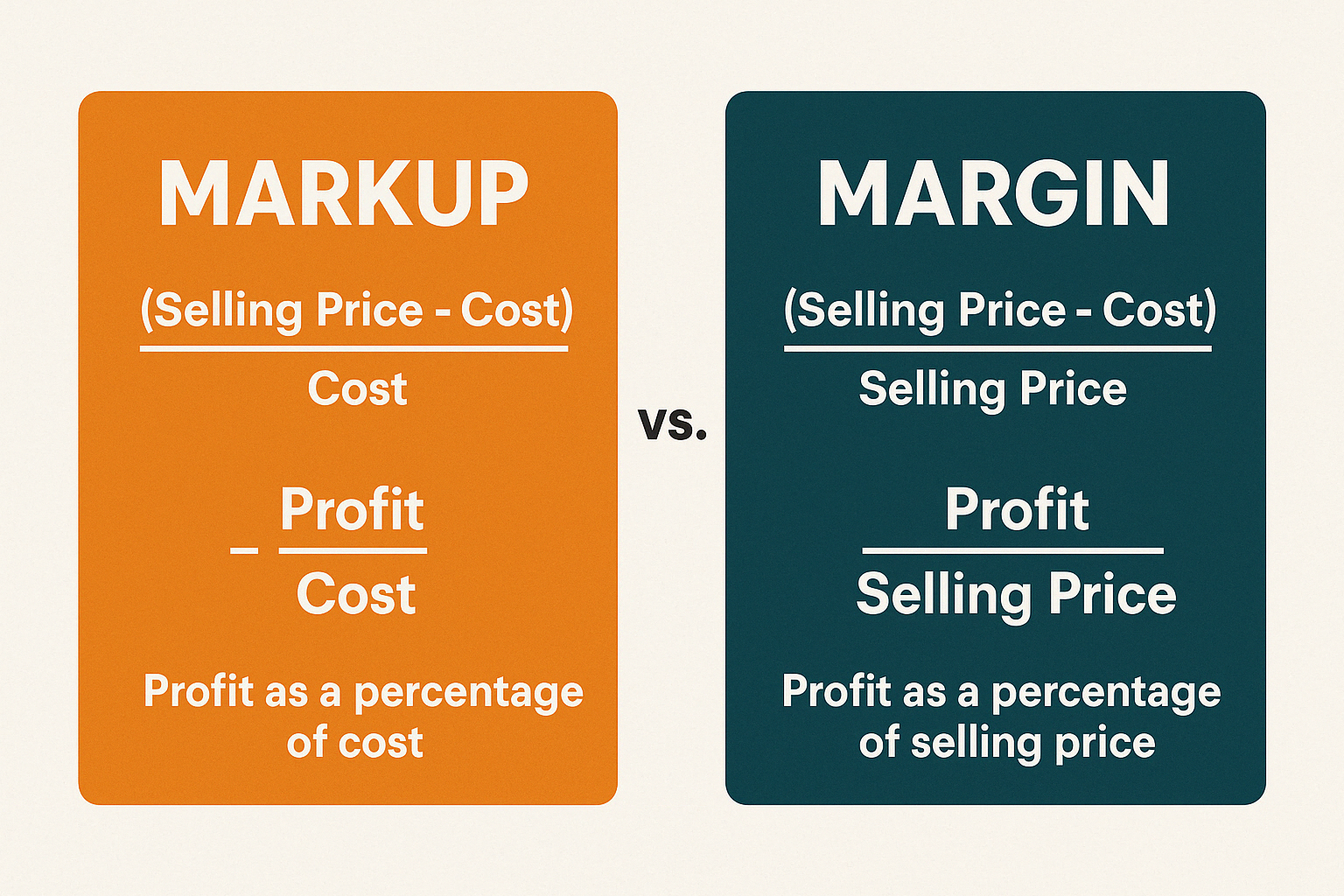The Tale of the Two Bakers: Markup vs. Margin
In the bustling town of Profitville, two bakers, Emma and Jake, decided to open their own bakeries. Emma, a meticulous planner, opened “Emma’s Delights,” while Jake, known for his quick decisions, started “Jake’s Treats.”
Both bakers sourced their ingredients from the same supplier, with the cost to make a loaf of bread being $2.
Emma’s Approach: Understanding Margin
Emma believed in understanding her profits in relation to her sales. She thought, “If I sell my bread for $5, my profit is $3. To find my margin, I divide my profit by the selling price: $3 ÷ $5 = 0.6, or 60%.”
This meant that 60% of her selling price was profit. Emma used this margin to assess the overall profitability of her bakery, ensuring that her pricing strategy aligned with her financial goals.
Jake’s Approach: Focusing on Markup
Jake, on the other hand, focused on how much he added to his costs to determine the selling price. He thought, “If my bread costs $2 to make, and I want a 50% markup, I’ll add $1 to the cost, making the selling price $3.”
Jake’s markup was calculated by dividing the profit by the cost: $1 ÷ $2 = 0.5, or 50%. He used this markup to set his prices, ensuring he covered costs and made a profit.
The Outcome
Over time, Emma noticed that her higher margin allowed her to reinvest more into her bakery, improving quality and customer experience. Jake, while selling more due to lower prices, found his profits were tighter, limiting his ability to expand.
The Lesson
Emma and Jake both made profits, but their approaches highlighted the difference between margin and markup:
- Margin is the profit expressed as a percentage of the selling price.
- Markup is the profit expressed as a percentage of the cost.
Understanding both concepts is crucial for setting prices that ensure profitability and business growth.
Let’s connect and see how MWOS can help you better manage your business.




